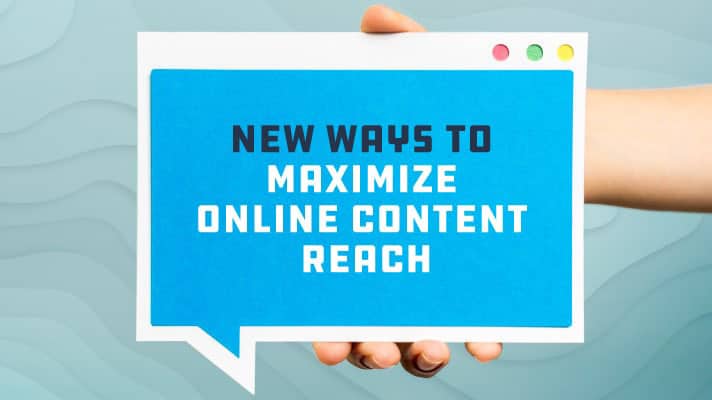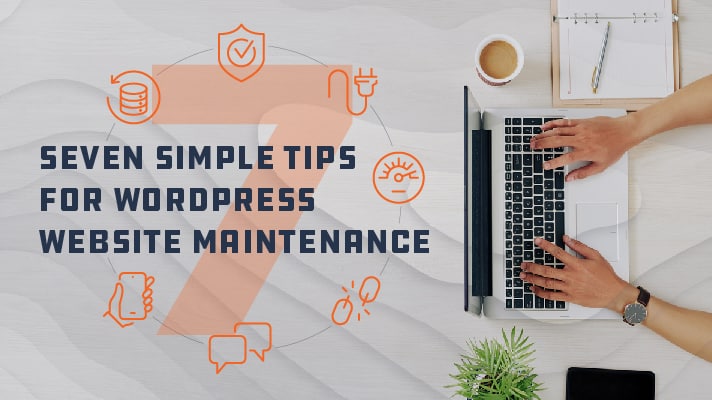Some rules are meant to be broken. I’m not implying you should go full Ferris Bueller, except maybe when it comes to maximizing online content. It’s time to upgrade your model for writing and start creating high-quality, relevant content that goes beyond SEO ranking and actually engages with your audience.
The question isn't 'what are we going to do', the question is 'what aren't we going to do?
Ferris Bueller
Why Content is King
The World Wide Web was still in its infancy when Bill Gates said ‘Content is King’ in 1996. In an excerpt from that essay, Gates writes:
If people are to be expected to put up with turning on a computer to read a screen, they must be rewarded with deep and extremely up-to-date information that they can explore at will. They need to have audio, and possibly video. They need an opportunity for personal involvement that goes far beyond that offered through the letters-to-the-editor pages of print magazines.
According to a 2021 report from Data Reportal, there are over 4.6 billion internet users. Currently, 50.2% of overall web traffic comes from mobile phones. Internet users spend an average of nearly 7 hours browsing the web each day and over 2 hours of that time is spent on social media.
The ability for consumers to indulge in the endless refresh of social media feeds is one of the reasons it’s so addicting for consumers to be online. It’s also the perfect opportunity for businesses to take advantage of that need for constant online content generation.
However, mindless scrolling creates a gap between content creation and engagement. All content expires quickly on social media. Creating a home for your content on your website helps prolongs its impact on your target audience. You could do this by just copying and pasting your content on different platforms. Or you could be direct in the intent of your online content.
Posting content willy-nilly doesn’t improve your reach. Neither does following simiple SEO checklists. Just as Bill Gates suggested before the word ‘blog’ was even coined, improving blog content starts with the content.
Ways to Maximize Online Content
Maximizing online content starts with the purpose of the content and how the audience consumes it. This includes pictures, videos, audio clips, animated graphics, etc. Once you craft a compelling or timely story and apply purposeful visuals, you can focus on the nitty-gritty details of SEO ranking.
Provide Value to Your Audience
You can use all the right search terms, word count, and tags, but if your content doesn’t fill the needs of your audience, it’s missing its mark. Understanding your audience and the impact of your content is essential.
If you don’t know who your audience is, how will you ever connect with them? The first step in creating meaningful content is knowing the basics of your audience: age, gender, ethnicity, employment interest, hobbies, or personal aspirations. Once you have that persona, you can start to break down your audience’s interests, behaviors, and needs. Apply this persona lens to your content. We explain a topic to a child differently than an adult or even an amateur versus an expert in the topic. Use this same approach in creating content.
It is important content has value. Once you have a lens, you can narrow the focus of your content. What is the purpose? How do you want your audience to use the information you are providing? How do you want to present this information? Remember, there are several ways people learn and retain information. Content is also shared on several different platforms using numerous mediums. Take advantage of this when improving blog content.
Utilize Visual Mediums
The increasing use of social media heightens the importance of using visuals when creating online content. Visual aids aren’t always photos and videos. Although having featured images and videos do improve SEO. On top of this try including animated graphics, infographics, and emphasized typography to aid in making your content stand out.
The New York Times’ use of illustrations is an excellent example of the impact creative visuals have in telling a story. When reading an article that includes visual aids, it becomes more engaging always automatically for consumers. Plus, the shelf-life of online content drastically improves when some form of visual aid is used beyond the typical stock featured image.
Take a look at your own online engagement habits. Are you more likely to engage with content with pictures and videos, or a post with a long body of text and no visual aids?
Optimize SEO Reach
So, you have your story. You have the elements to help connect with your audience. But, how does your audience find it? The next step in maximizing online content is improving SEO ranking to ensure internet algorithms connect your consumers to your content. This is when the nitty-gritty checklist comes into play.
SEO Checklist:
Utilize keywords/phrases throughout post
Include topic in blog post title
Use external and internal linking
Write meta description or excerpt
Check the readability of the article
Use categories and tags
Utilizing keywords and phrases increases the ranking of your post when your audience searches for services and information on the topic. Don’t forget to add similar phrases and keywords throughout the body of the blog as well. It might be helpful to search for your topic and see what results come up. Are the results related to your post? Does your post provide information the others lack. If you aren’t happy with the results, consider using a different combination of keywords.
Keyphrases are important to incorporate into the title of your post. These keywords also need to be included in the excerpt and meta description of the post. Search engines and your audience use excerpts and snippets to preview the post.
Next, add links. Both internal and external links help search engines know to prioritize your webpage. Backlinking or inbound linking is also an excellent way to increase traffic to your post. Google confirms that backlinks remain one of their three most important search engine ranking factors.
Finally, don’t forget to check the readability of your post. Search engines need to be able to understand your post, and so does your audience. For example, having the appropriate heading structure helps the audience digest the content of your post. Headings also help search engines rank your post. You can write well while still checking off the requirements for SEO.
It’s easy to master an SEO checklist, and it’s important that you do. The better your SEO ranking, the higher probability your content will reach your audience. Remember, we’ve all searched for information on a topic and been disappointed in the results. That’s why it is vital to write for your audience. Having a high SEO ranking does not mean you are producing the best online content. If you stay engaged while reading your blog, your audience will too.
Incorporating Inbound Marketing Strategies
At Seventh Scout, our team uses a combination of different marketing strategies to fill the needs of our clients. Inbound Marketing is one of those strategies. The goal is to attract, engage, and delight your audience. Online content plays a large role in implementing an inbound marketing strategy. Learn more about the leading role content plays for inbound marketing.



